Preface
Preface to the Second Edition
Contents
Chapter 1 Introduction
Exercises
Chapter 2 The Basic Theory
2.1 Weierstrass Equations
2.2 The Group Law
2.3 Projective Space and the Point at In.nity
2.4 Proof of Associativity
2.5 Other Equations for Elliptic Curves
2.6 Other Coordinate Systems
2.7 The j-invariant
2.8 Elliptic Curves in Characteristic 2
2.9 Endomorphisms
2.10 Singular Curves
2.11 Elliptic Curves mod n
Exercises
Chapter 3 Torsion Points
3.1 Torsion Points
3.2 Division Polynomials
3.3 The Weil Pairing
3.4 The Tate-Lichtenbaum Pairing
Exercises
Chapter 4 Elliptic Curves over Finite Fields
4.1 Examples
4.2 The Frobenius Endomorphism
4.3 Determining the Group Order
4.4 A Family of Curves
4.5 Schoof ’s Algorithm
4.6 Supersingular Curves
Exercises
Chapter 5 The Discrete Logarithm Problem
5.1 The Index Calculus
5.2 General Attacks on Discrete Logs
5.3 Attacks with Pairings
5.4 Anomalous Curves
5.5 Other Attacks
Exercises
Chapter 6 Elliptic Curve Cryptography
6.1 The Basic Setup
6.2 Di.e-Hellman Key Exchange
6.3 Massey-Omura Encryption
6.4 ElGamal Public Key Encryption
6.5 ElGamal Digital Signatures
6.6 The Digital Signature Algorithm
6.7 ECIES
6.8 A Public Key Scheme Based on Factoring
6.9 A Cryptosystem Based on the Weil Pairing
Exercises
Chapter 7 Other Applications
7.1 Factoring Using Elliptic Curves
7.2 Primality Testing
Exercises
Chapter 8 Elliptic Curves over Q
8.1 The Torsion Subgroup. The Lutz-Nagell Theorem
8.2 Descent and the Weak Mordell-Weil Theorem
8.3 Heights and the Mordell-Weil Theorem
8.4 Examples
8.5 The Height Pairing
8.6 Fermat’s In.nite Descent
8.7 2-Selmer Groups; Shafarevich-Tate Groups
8.8 A Nontrivial Shafarevich-Tate Group
8.9 Galois Cohomology
Exercises
Chapter 9 Elliptic Curves over C
9.1 Doubly Periodic Functions
9.2 Tori are Elliptic Curves
9.3 Elliptic Curves over C
9.4 Computing Periods
9.5 Division Polynomials
9.6 The Torsion Subgroup: Doud’s Method
Exercises
Chapter 10 Complex Multiplication
10.1 Elliptic Curves over C
10.2 Elliptic Curves over Finite Fields
10.3 Integrality of j-invariants
10.4 Numerical Examples
10.5 Kronecker’s Jugendtraum
Exercises
Chapter 11 Divisors
11.1 De.nitions and Examples
11.2 The Weil Pairing
11.3 The Tate-Lichtenbaum Pairing
11.4 Computation of the Pairings
11.5 Genus One Curves and Elliptic Curves
11.6 Equivalence of the De.nitions of the Pairings
11.7 Nondegeneracy of the Tate-Lichtenbaum Pairing
Exercises
Chapter 12 Isogenies
12.1 The Complex Theory
12.2 The Algebraic Theory
12.3 V´elu’s Formulas
12.4 Point Counting
12.5 Complements
Exercises
Chapter 13 Hyperelliptic Curves
13.1 Basic De.nitions
13.2 Divisors
13.3 Cantor’s Algorithm
13.4 The Discrete Logarithm Problem
Exercises
Chapter 14 Zeta Functions
14.1 Elliptic Curves over Finite Fields
14.2 Elliptic Curves over Q
Exercises
Chapter 15 Fermat’s Last Theorem
15.1 Overview
15.2 Galois Representations
15.3 Sketch of Ribet’s Proof
15.4 Sketch of Wiles’s Proof
Appendix A Number Theory
Basic results
p-adic numbers
Appendix B Groups
Basic de.nitions
Structure theorems
Homomorphisms
Appendix C Fields
Finite .elds
Embeddings and automorphisms
Appendix D Computer Packages
D.1 Pari
D.2 Magma
D.3 SAGE
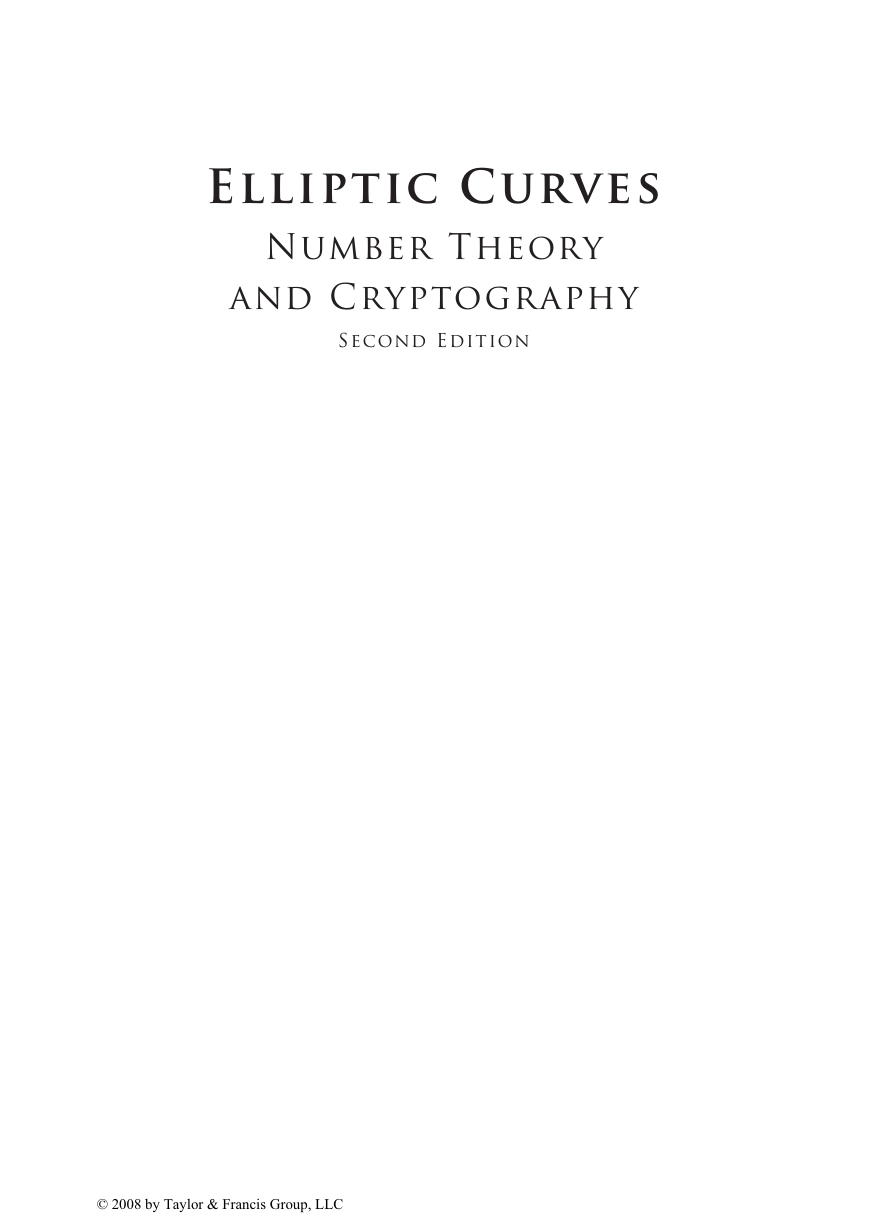
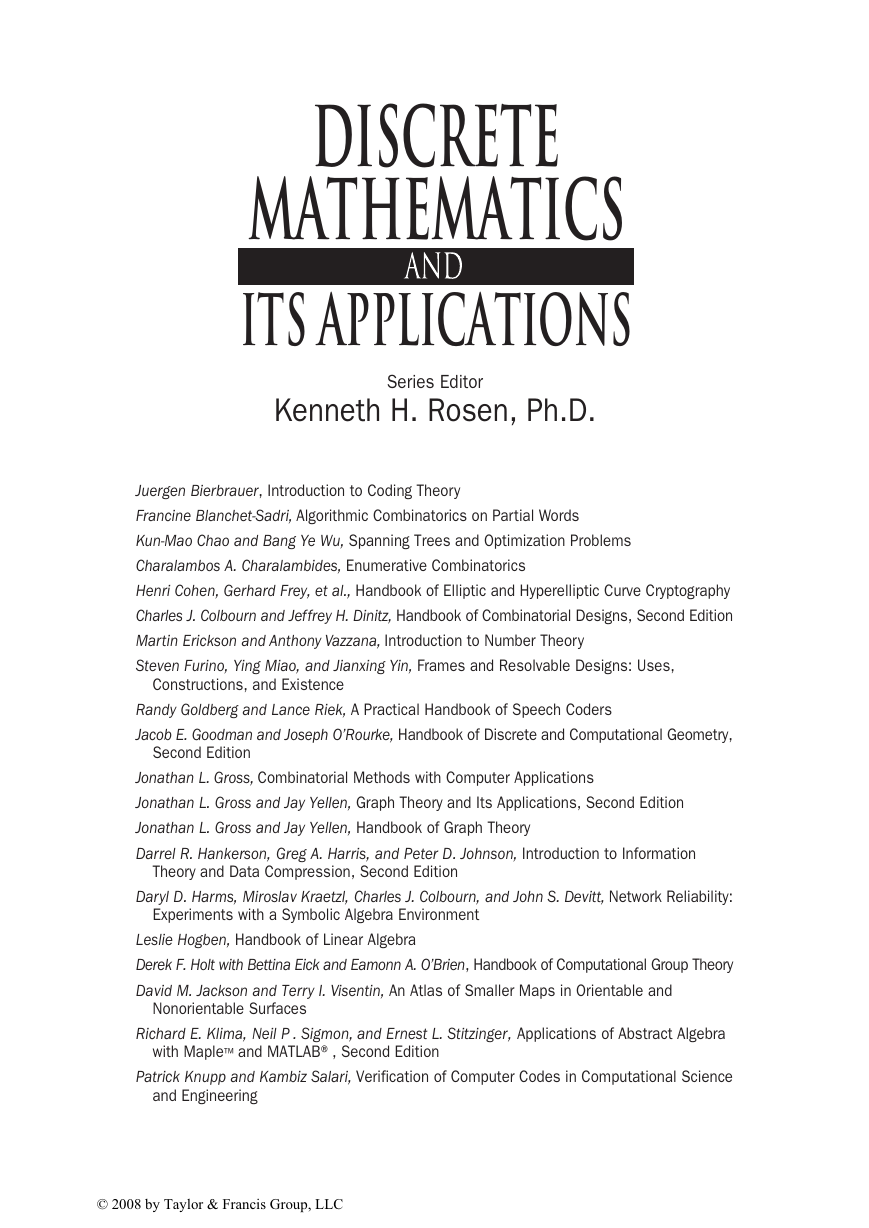
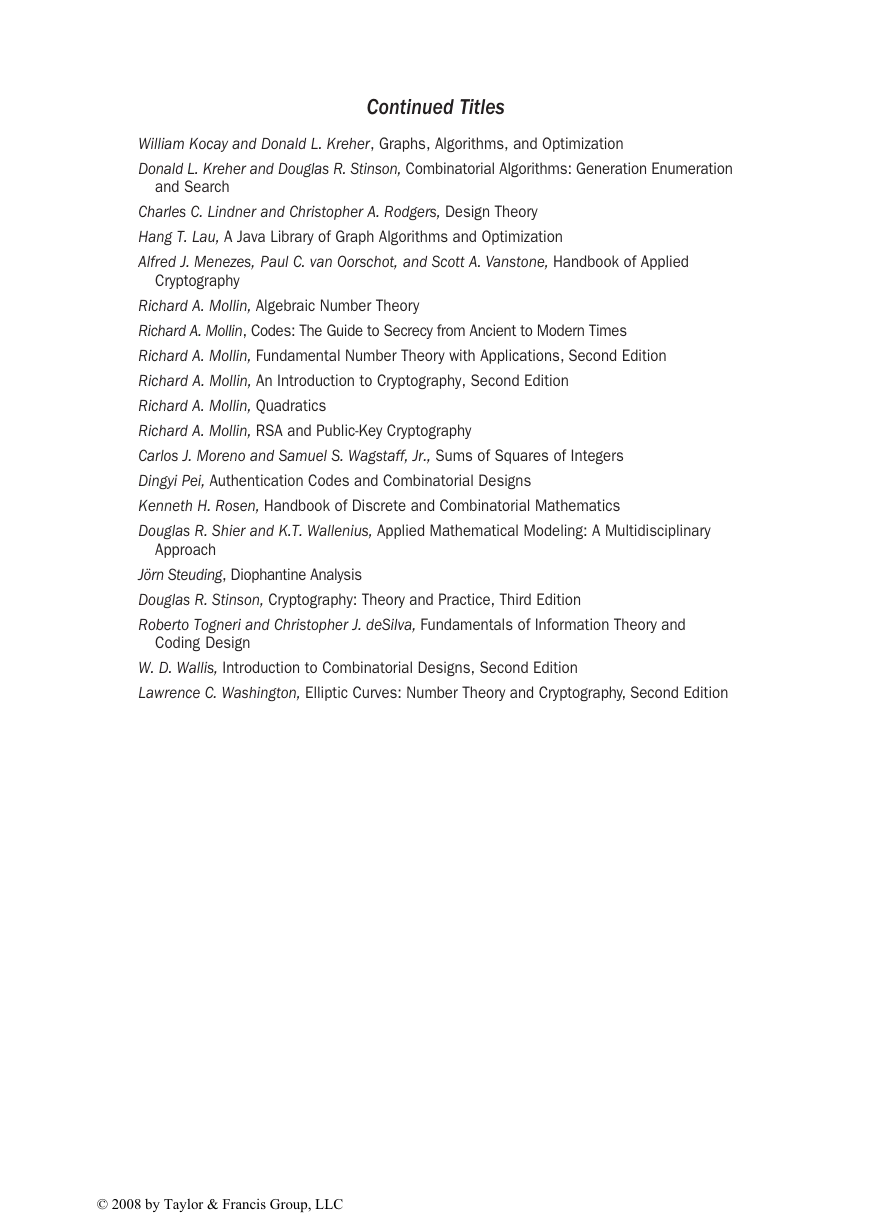

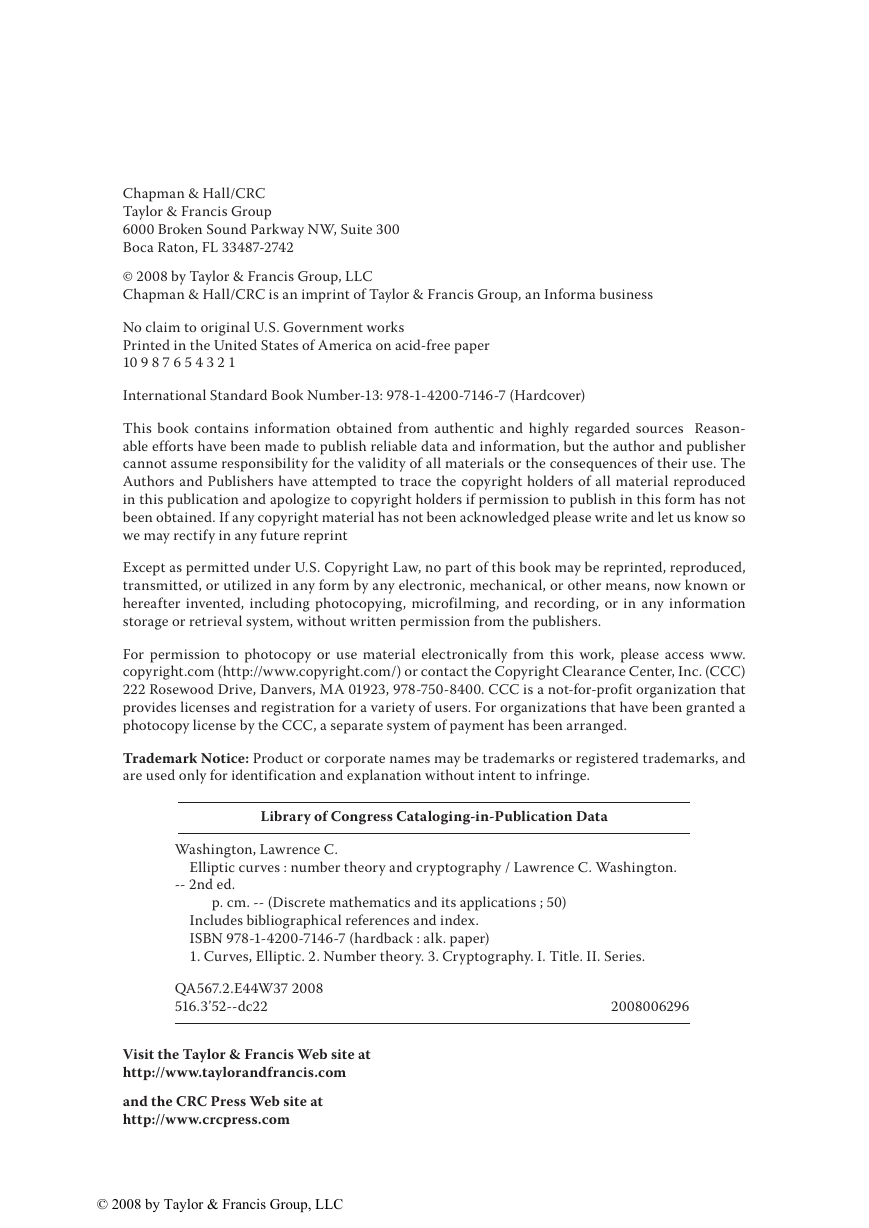

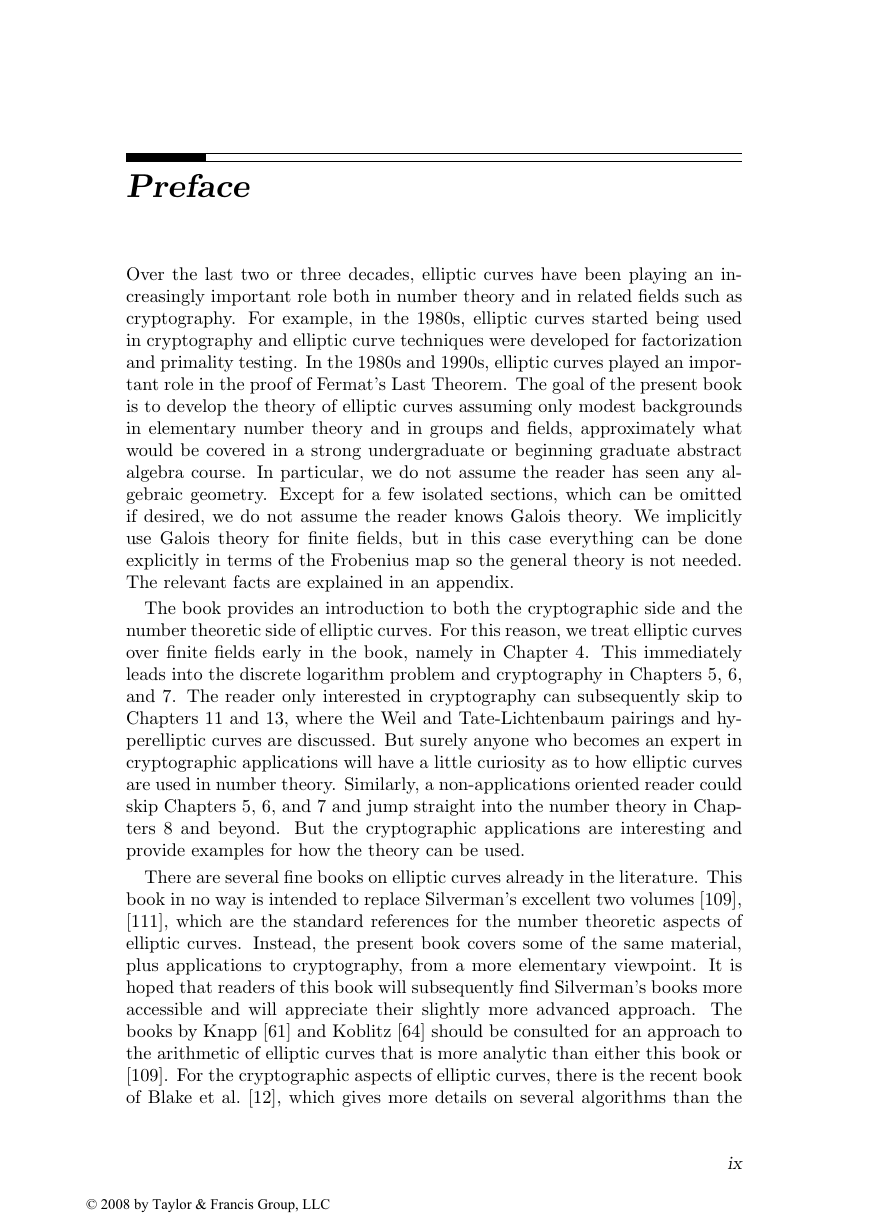
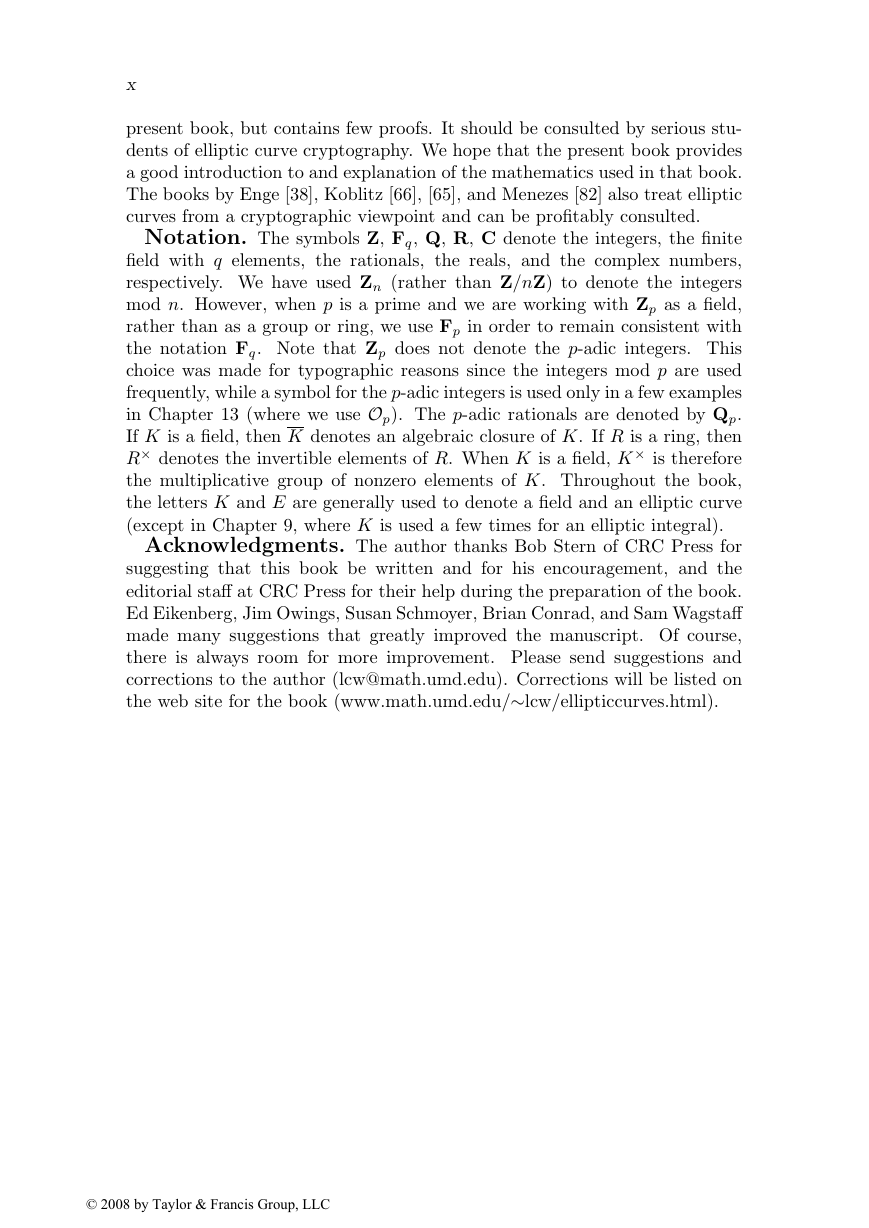








 2023年江西萍乡中考道德与法治真题及答案.doc
2023年江西萍乡中考道德与法治真题及答案.doc 2012年重庆南川中考生物真题及答案.doc
2012年重庆南川中考生物真题及答案.doc 2013年江西师范大学地理学综合及文艺理论基础考研真题.doc
2013年江西师范大学地理学综合及文艺理论基础考研真题.doc 2020年四川甘孜小升初语文真题及答案I卷.doc
2020年四川甘孜小升初语文真题及答案I卷.doc 2020年注册岩土工程师专业基础考试真题及答案.doc
2020年注册岩土工程师专业基础考试真题及答案.doc 2023-2024学年福建省厦门市九年级上学期数学月考试题及答案.doc
2023-2024学年福建省厦门市九年级上学期数学月考试题及答案.doc 2021-2022学年辽宁省沈阳市大东区九年级上学期语文期末试题及答案.doc
2021-2022学年辽宁省沈阳市大东区九年级上学期语文期末试题及答案.doc 2022-2023学年北京东城区初三第一学期物理期末试卷及答案.doc
2022-2023学年北京东城区初三第一学期物理期末试卷及答案.doc 2018上半年江西教师资格初中地理学科知识与教学能力真题及答案.doc
2018上半年江西教师资格初中地理学科知识与教学能力真题及答案.doc 2012年河北国家公务员申论考试真题及答案-省级.doc
2012年河北国家公务员申论考试真题及答案-省级.doc 2020-2021学年江苏省扬州市江都区邵樊片九年级上学期数学第一次质量检测试题及答案.doc
2020-2021学年江苏省扬州市江都区邵樊片九年级上学期数学第一次质量检测试题及答案.doc 2022下半年黑龙江教师资格证中学综合素质真题及答案.doc
2022下半年黑龙江教师资格证中学综合素质真题及答案.doc